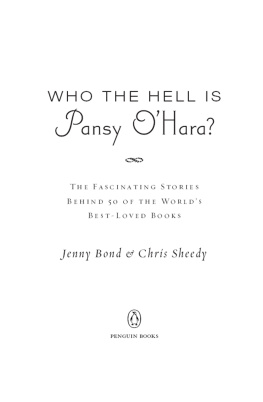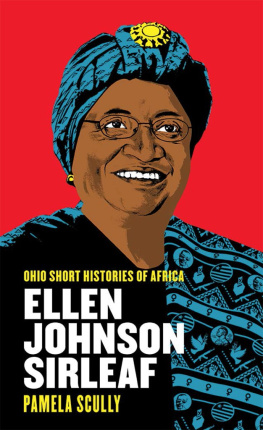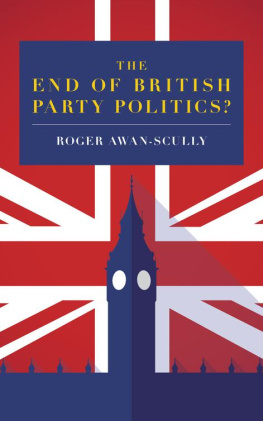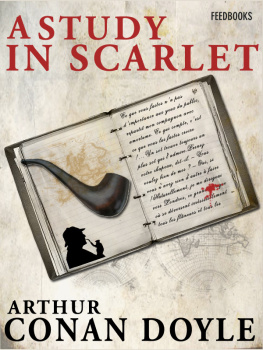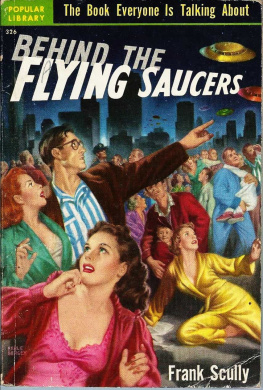Copyright 2016 Fordham University Press
All rights reserved. No part of this publication may be reproduced, stored in a retrieval system, or transmitted in any form or by any meanselectronic, mechanical, photocopy, recording, or any otherexcept for brief quotations in printed reviews, without the prior permission of the publisher.
Fordham University Press has no responsibility for the persistence or accuracy of URLs for external or third-party Internet websites referred to in this publication and does not guarantee that any content on such websites is, or will remain, accurate or appropriate.
Fordham University Press also publishes its books in a variety of electronic formats. Some content that appears in print may not be available in electronic books.
Visit us online at www.fordhampress.com.
Library of Congress Control Number: 2016936862
Printed in the United States of America
18 17 16 5 4 3 2 1
First edition
RECOVERING
A SCARLET PANSY
AN INTRODUCTION
Robert J. Corber
LARGELY FORGOTTEN SINCE ITS PUBLICATION IN 1932 AND OUT OF PRINT UNTIL now, A Scarlet Pansy is one of the most remarkable novels about queer identity published in the twentieth century. It offers an unusually rich portrayal of late-nineteenth-and early-twentieth-century urban queer life by recounting the sexual adventures of its transgender protagonist, Fay Etrange, to whom it refers throughout as she, as she triumphantly makes her way in the world. The novels exploration of the sexual underworld before the categories homosexual and heterosexual became firmly entrenched in American society may explain why it has failed to receive more attention. Its depiction of Fays queer apprenticeship destabilizes the binary construction of gender and sexual identities. The little scholarly commentary that exists on A Scarlet Pansy has ignored this aspect of Fays sexual coming-of-age and discussed the novel as a lost gay classic. The novels delineation of queer life certainly holds significance for gay readers, but this approach has marginalized its transgender content by assimilating it into a tradition of writing centered on gay male experience.1 But A Scarlet Pansy is first and foremost a queer novelthat is, a novel which explores a form of gender and sexual difference that cannot be identified as homosexual without drastically simplifying the history of sexuality. Recovering A Scarlet Pansys importance for both transgender and gay readers highlights its subversive treatment of the queer past, which scholars who have homosexualized Fays identity and experience have overlooked.
Fays initiation into queer life begins when she leaves the small town in rural Pennsylvania where she was born and moves to Baltimore in search of work to provide for her downwardly mobile family. Although her gender and sexual difference are obvious to everyoneincluding her father and brother, who pressure her to adopt a more normal gender presentationshe does not acknowledge them until the director of the YMCA where she is taking night classes seduces her. At first she is ashamed of her unnatural sexual desires and struggles to sublimate them in work, but when she moves to New York and discovers its raucous bohemian milieu, she immerses herself in it, befriends famed female impersonator Bert Savoy, and becomes the center of a closely knit circle of transgender men and women. In a queer reimagining of the Horatio Alger story, Fay quickly rises through the banking world, despite her transgender identity, and, having amassed a small fortune, she fulfills her ambition to become a physician. She has inherited from her mother a love of service, and she hopes to discover a cure for gonorrhea, which she feels has been unjustly fastened on mankind as a penalty for enjoying love. But the First World War intervenes, and she dies heroically on a battlefield in France while attending to the wounded American lieutenant with whom she has fallen in love.
Scholars have identified the period in which A Scarlet Pansy takes place as a particularly momentous one in the history of sexuality. Modern forms of sexual personhood emerged and steadily gained visibility. Fairies, transgender men who adopted a flamboyant, tough girl style of femininity and who engaged in sexual relations with conventionally masculine men, became fixtures in many urban working-class and immigrant neighborhoods.2 The sensationalistic newspaper coverage of the 1892 trial and conviction of the middle-class transgender Alice Mitchell, who murdered her girlfriend Freda Ward when she refused to elope with her and yielded to family pressure by becoming engaged to a man, worked to conflate female same-sex desire, masculinity, and cross-dressing in the public imagination.3 In the wake of British writer Oscar Wildes trial and conviction for gross indecency in 1895, similar scandals involving middle-class men in the United States encouraged the American public to view homosexuality as a distinct form of personhood linked to vice and corruption.4 At the same time, commercialized entertainment began to exploit the new forms of gender and sexual expression.5 Vaudeville, Broadway, and a nascent movie industry exposed mainstream audiences to the vibrant queer culture that was beginning to take shape in New York and other cosmopolitan centers by incorporating camp humor and other queer vernacular forms, albeit in ways that tended to reinforce negative stereotypes.
The period also saw the rise of a new science, sexology, that attempted to analyze, categorize, and regulate the new sexual identities.6 Sexologists regarded same-sex desire as a symptom of an inverted gender identity, and they made a distinction between congenital and acquired forms of sexual inversion. They viewed the congenital male invert as a woman trapped in a mans body and believed that his inversion could be read on his bodyin his narrow shoulders, large hips, small or under-developed penis and testicles, and high-pitched falsetto voice. Ironically, the new sciences biological determinism worked to normalize same-sex desire. Because the true male invert was attracted to normal men, his desire did not threaten to destabilize the binary organization of gender identities and roles but reinforced them. In the words of Richard von Kraft-Ebbing, the author of one of the key texts of sexologyPsychopathia Sexualis, published in German in 1886 and translated into English in 1892, the same year as the Alice Mitchell trialmale inverts were natures step-children, and although they should be prevented from reproducing, lest they pass their pathological condition on to their offspring, they deserved societys sympathy and understanding. Unlike the man who had acquired his inversion through loose morals and debauchery, the true male invert was born sick and could not control his nature. Many sexologists advocated legal reform to protect inverts from blackmailers who entrapped and threatened to expose them. Most sexologists did not accept the view espoused by their more progressive colleagues that inversion constituted a harmless variation, but they agreed that congenital inverts needed treatment, not imprisonment.
Although sexological categories filtered into mainstream American society fairly rapidly and informed how even ordinary Americans made sense of their sexual desires, Fay and the other characters in



